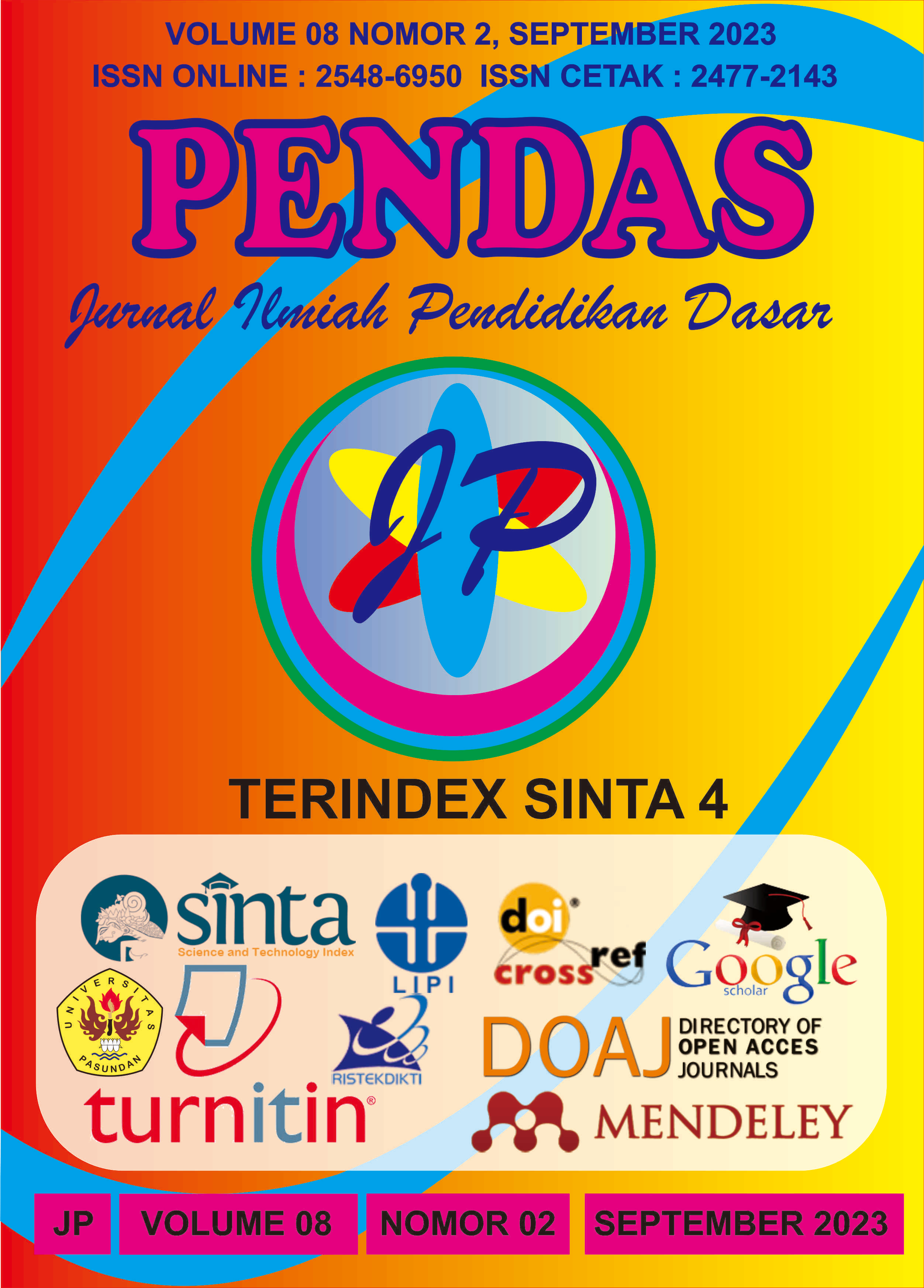HUBUNGAN ANTARA ADVERSITY QUOTIENT (AQ) DAN KECERDASAN LOGIS MATEMATIS TERHADAP HASIL BELAJAR MATEMATIKA SISWA KELAS VIII SMP NEGERI 1 TERARA TAHUN AJARAN 2022/2023
DOI:
https://doi.org/10.23969/jp.v8i2.10058Keywords:
Adversity Quotient (AQ); Mathematical Logical Intelligence; Mathematics Learning Outcomes.Abstract
This study aims to determine the relationship between Adversity Quotient (AQ) and mathematical logical intelligence on the mathematics learning outcomes of the eighth grade students of SMP Negeri 1 Terara in academic year 2022/2023 either partially or simultaneously. This research is a quantitative research with ex-post facto research methods. The population of this study was 278 class VIII students of SMP Negeri 1 Terara for the 2022/2023 academic year. The sample used was 31 people who were determined using the cluster random sampling technique. The instrument in this study used an Adversity Quotient (AQ) questionnaire, a mathematical logical intelligence test and a mathematics learning achievement test in the form of multiple choice questions. The results of the study show that 1) there was a positive and significant relationship with the Adversity Quotient (AQ) on the mathematics learning outcomes of the eighth grade students of SMP Negeri 1 Terara for the 2022/2023 academic year with a contribution of 28,6%; 2) there was a positive and significant relationship between mathematical logical intelligence and mathematics learning outcomes of the eighth grade students of SMP Negeri 1 Terara for the 2022/2023 academic year with a contribution of 35,4%; 3) there was a jointly positive and significant relationship between Adversity Quotient (AQ) and mathematical logical intelligence on the mathematics learning outcomes of the eighthgrade students of SMP Negeri 1 Terara for the 2022/2023 academic year with a contribution of 42,2%.Downloads
References
Cahyani, C.A., & Sutriyono. (2018). Analisis Kesalahan Siswa dalam Menyelesaikan Soal pada Materi Operasi Penjumlahan dan Pengurangan Bentuk Aljabar bagi Siswa Kelas VII Kristen 2 Salatiga. Jurnal Teori dan Aplikasi Matematika. 2(1). 26-30.
Dewi, N.K., Untu, Z.,&Dimpudus, A. (2020). Analisis Kesulitan Menyelesaikan Soal Matematika Materi Operasi Hitung Bilangan Pecahan Siswa kelas VII. Jurnal PRIMATIKA , 9(2). 61-70.
Hanifah, M., & Khalif Alam, S. (2019). Pengaruh Kemampuan Berpikir Logis Matematis pada Anak Usia Dini dengan Menggunakan Media Pembelajaran Lotto di Kelompok B. Jurnal Ceria, 2(6), 271–4107.
Kemendikbud. (2014). Materi Pelatihan Implementasi Kurikulum 2013 Tahun 2014. Jakarta: Kementrian Pendidikan dan Kebudayaan.
Leonard, & Amanah, N. (2014). Pengaruh Adversity Quotient (AQ) dan Kemampuan Berpikir Kritis Terhadap Prestasi Belajar Matematika. In Perspektif Ilmu Pendidikan. 28(1). 55-64.
Milsan, A. L., & Wewe, M. (2018). Hubungan Antara Kecerdasan Logis Matematis dengan Hasil Belajar Matematika Melkior Wewe. In Journal of Education Technology. 2(2). 65-69.
Priadana, S., & Sunarsi, D. (2021). Metode Penelitian Kuantitatif. Tangerang: Pascal Books.
Putriana, C., & Noor, L.N. (2021). Pengaruh Pembelajaran Daring terhadap Motivasi dan Prestasi Belajar Matematika Siswa. Jurnal Riset dan Inovasi Pendidikan Matematika. 2(1). 1-6.
Rukmana, I., Hasbi, M., & Paloloang, B. (2016). Hubungan Adversity Quotient dengan Hasil Belajar Matematika Siswa Kelas XI SMA Negeri Model Terpadu Madani Palu. Jurnal Eelektrik Pendidikan Matematika Tadulako, 03(03). 325-333.
Stoltz, P. G. (2000). Adversity Quotient Mengubah Hambatan Menjadi Peluang (Y. Hardiwati, Ed.). Jakarta: Percetakan PT Gramedia.
Utami, A. K. S., & Haerudin (2021). Analisis Kesulitan Siswa dalam Menyelesaikan Soal Kemampuan Berpikir Logis Matematis. Jurnal Ilmiah Pendidikan Matematika. 4(1). 55-61.
Yeni, E. M. (2015). Kesulitan belajar Matematika di Sekolah. Jupendas. 2(2). 1-10.
Downloads
Published
Issue
Section
License
Copyright (c) 2023 Pendas : Jurnal Ilmiah Pendidikan Dasar

This work is licensed under a Creative Commons Attribution 4.0 International License.



















